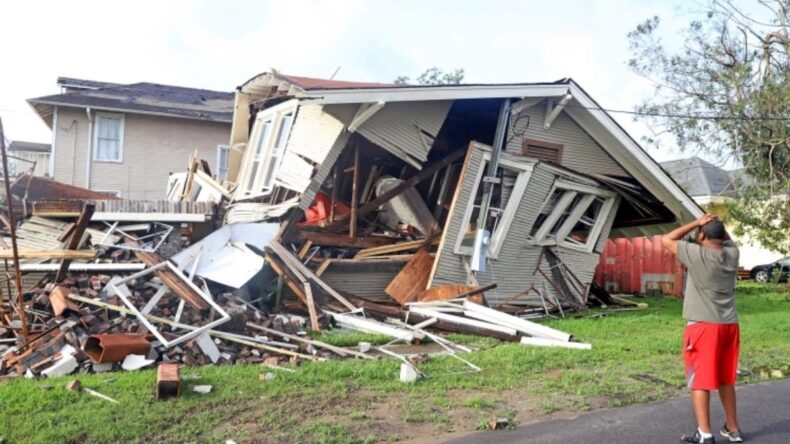Death toll increase to 44 due to flash floods caused by Hurricane Ida
Three days after Hurricane Ida crashed in Louisiana, its remnants swept through at least four states in the northeastern United States the day before, causing heavy rains and severe flooding that washed away cars, lined the ground, and flights from Virginia to New England.
The flash floods killed at least 43 people across New York, New Jersey and two other countries in attacks that ended on Thursday and became a frightening climate change signal for new forms of violence.
“I’m 50 years old,” said Metodija Mihajlov,” and I’ve never seen so much rain.” His underground Manhattan restaurant was flooded with three inches of water.
In large parts of New York, New Jersey, Pennsylvania and Connecticut, residents spent the day dealing with flooded houses, power outages, damaged roofs and appealing for help from family members and friends flooded.
Historic floods have hit the city’s underground stations as water is cut off, and the Metropolitan Transportation Authority has had to evacuate hundreds of people.
Cell phone videos capture water entering basements and cars floating on the streets. Emergency workers had to rescue people in boats that were stranded on the roofs of their vehicles.
In New Jersey, the hurricane killed at least 23 people. Governor Phil Murphy told reporters.
“Most of these dead people are people caught in their cars,” he said.
A state soldier has died in neighbouring Connecticut. Police said thirteen people died in New York City, including 11 who could not flee their basements.
“Among the people most at risk during the floods here are those who live in unregistered houses that do not comply with the safety codes required to save lives,” lawmaker Alexandria Ocasio -Cortez tweet confirmed.
The rain was terrifying with its power. More than 3 inches fell in one hour in Central Park on Wednesday night, breaking the record set by Tropical Storm Henri a few days ago.
More than half a foot of rain fell, across the region, within a few hours and several areas in New York and New Jersey reported more than nine inches.
Emergencies were declared in the state of New York, New York City and New Jersey. Officials in the affected countries have urged residents to stay home as workers work to clear roads and restore the functioning of the subway and commuters that serve millions of residents.
In New York City alone, paramedics rescued hundreds of people from flooded cars and hundreds of others from underground subways.
On Thursday evening, nearly 38,000 homes in Pennsylvania, 24,000 in New Jersey and 12,000 in New York were powerless, according to the website Power Outage.
It is uncommon for such storms to strike the northeastern US sea. Hurricanes come as the ocean floor warms due to climate change. Warming causes hurricanes to overheat and carry large amounts of water, endangering coastal communities, say scientists.
“Global warming is here and there, and it will continue to get worse and worse unless we do something about it,” Democratic Alliance Senator Chuck Schumer said.
The NWS has warned that the threat of hurricanes will continue, as there are storm surveys that will operate in parts of southern Connecticut, northern New Jersey, and southern New York.













